Raincoat tent: features and subtleties of use

When going hunting or fishing overnight in open areas, many use sleeping bags, but this shelter option is not suitable if you plan to stay in nature for several days. In this situation, it is recommended to use army raincoats as a temporary shelter. They reliably protect against bad weather conditions and are easy to assemble.
What it is?
Raincoat tents have been around for a very long time. This is an indispensable hiking accessory made of dense fabric - tarpaulin, standard size 180 * 180 cm. When assembled, the product looks like an ordinary tent, but, unlike the latter, has greater versatility and allows you to comfortably spend time in the wild.


Raincoat-tent acts as a universal shelter, which can always be at hand and does not require complex installation. To collect it, it is enough to stretch the cloak and fix it on special stakes. The product has eyelets made of leather at the corners.
In addition, many models of tents have loops or wooden buttons that allow you to “sew” several tents at the same time to build a multi-seat shelter.
Additionally, ropes are sewn into the panels, thanks to which you can make a hood.Its lower corner is easily fastened due to the presence of buttons. The main feature of these devices is that in the models there is only one slot for the hand, the second hand must be passed between the buttons. Many manufacturers produce products with convenient zipper fasteners.

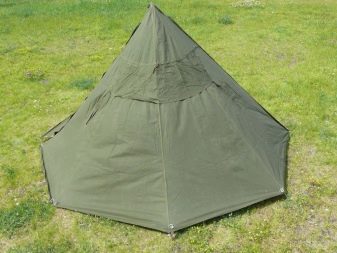
Unlike conventional tents, these models have the following components.
- Lacing ropes. At their ends there is a winding. The diameter of the ropes usually does not exceed 5 mm.
- Racks. These fixtures make it easy to install the shelter.
- Wooden piercers. For their manufacture, as a rule, birch is used, but models from other harder wood species can also be found.
- Metal piercings. They have the form of steel wire, with a diameter of up to 4 mm.
Other equipment may also be present in the design - it all depends on the size of the tent, as well as on how many people it is designed to accommodate. If necessary, huge shelters are installed in nature; for this, several canvases are connected.
The device is usually worn both behind the back (in the form of a hiking bag) and in the form of a cape.
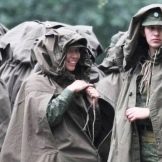



A raincoat found a special application in the army. Its soldiers use it not only as a reliable shelter from adverse weather, but also as a bedding for cleaning weapons and shooting. The canvas of the army cape has:
- an additionally sewn layer of fabric, it allows you to increase the water resistance of the product;
- two holdings, thanks to which you can quickly create a comfortable cape with a hood from the fabric;
- loops on the boots for lacing the fabrics during the installation of the overnight stay;
- holes in the corners for drains;
- attachments for the bottom of the raincoat;
- hand hole.
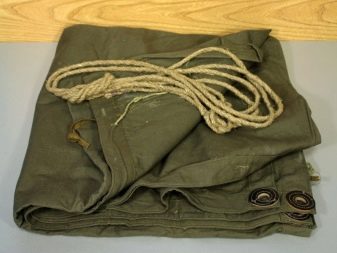

To date, there is a huge range of raincoat tents on sale, which is represented by various models. Before purchasing such a cover, it is important to take into account its dimensions and additional equipment. The main advantages of the product include little weight (when folded, it weighs no more than 200g) and a volume of 0.5 liters.
In addition, unlike other types of tents, these models never get wet. As for the shortcomings, this can be attributed to the high cost of the product.
History of appearance
The first specialized clothing, which resembles a modern raincoat, appeared in the time of Peter I in the Russian army. It was used by soldiers to protect against rain and wind. Starting in 1761, the model was supplemented with a hood-shaped collar. In the 19th century, such an accessory began to combine several items at the same time and became one of the main elements of equipment in many European countries. In 1884, in the Russian Empire, such accessories were included in the main equipment of the army; they were already made of waterproof fabric.

As for the Soviet era, such raincoats were fixed in the list of the main equipment of the entire army only at the beginning of 1936. They consisted of the following elements:
- canvas (size 180 * 180 cm);
- rope-lacing;
- two low pins;
- collapsible rack, which consists of two rods 65 cm long.
These “shelters” became especially popular during World War II, when soldiers used them not only as reliable protection from bad weather, but also for camouflage and carrying the wounded.At the same time, in the guards, raincoats served as capes, and in open areas they built spacious shelters, connecting several canvases at the same time.
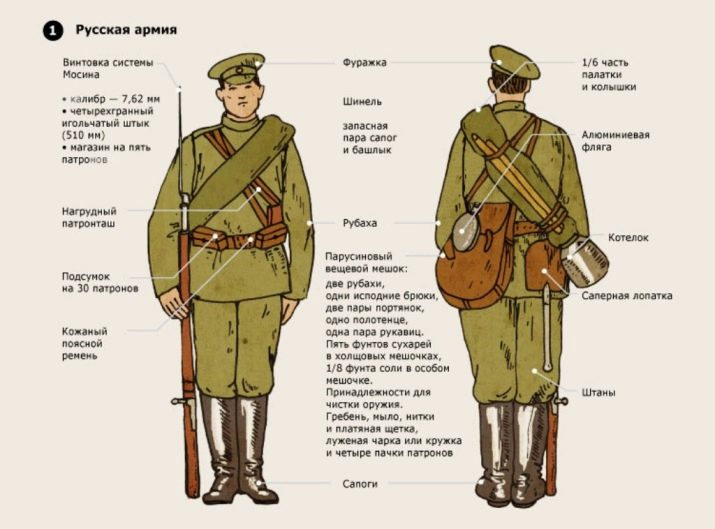
Today, the defense industry produces improved versions of models that are characterized by high strength and have unique camouflage properties.
Varieties
Raincoat tents are considered multifunctional structures and are available in several types, each of which has its own characteristics. Now on sale you can find the following types of products.
- Frame-deciduous. This is the so-called soldier (army) cape, which can be installed from improvised materials. In this case, the frame is mounted, then it is covered with a canvas and branches with leaves.

- Frame fabric. They differ from the above in that in them the canvas is stretched with the help of special racks, branches, branches and poles.

- Fabric. For sewing fabric tents, waterproof fabric (film, tarpaulin) and rubberized material are used. They are thrown directly on a stretched rope and fixed between the stones so that there is a closed space at the foot.

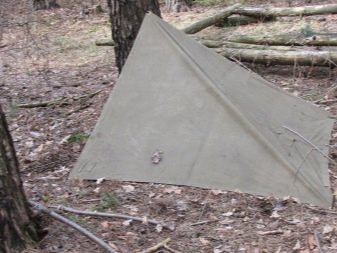
The military is in great demand. raincoat "Wehrmacht", its first model appeared in 1934 in Germany and was used by both officers and ordinary soldiers of the army. The German raincoat is suitable for both reliable protection from bad weather and group overnight equipment.



The modern model is presented in the form of a triangular shape, along the entire perimeter of which there are double-sided buttons. Thanks to this feature, it is possible to assemble a capacious structure for an overnight stay from a multitude of raincoat tents according to the “puzzle” principle.In addition, the product is produced from a densely pressed thread, which provides a moisture-repellent effect.
Today, many hunters use the German raincoat "Bundeswehr", its first sample appeared in 1931 and was made of cotton waterproof gabardine. Her modern model was supplemented with an original design: one side of the canvas is dark, and the other is lighter.


As for the colors, it can be bronze, green or flecktarn (creates an unusual visual effect, blurring clear boundaries between colors). The size of the fabric of the product is 203 * 250 cm, on each side there are 12 buttons with special loops.
The weight of the tent is small, which greatly simplifies its transportation.
A review of well-known trade brands under which modern raincoats are produced is headed by products Zeltbahn 31 (Germany), having a triangular shape and dimensions 203 * 203 * 240 cm.

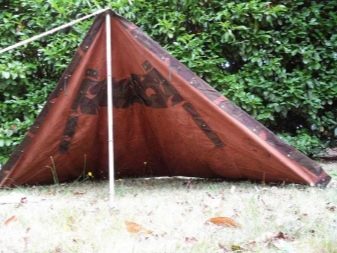
How to assemble?
Raincoat-tent, depending on the model range, may have different sizes. Depending on how many people it is designed for, the following installation instructions are used.
- The rack must be placed so that it rests firmly on the middle loop of the structure, placed on the side of the tarpaulin. In this case, the guy is made with a rope, and the four corners of the cloak are attached to the ground with pins. If there are no jokes available, then the canvas is pressed down with stones.
- To assemble the shelter, you need to connect two raincoats to each other, each of them will represent a separate roof slope. Open ends should be fastened with 2 ropes and half-racks, and 2 free corners should be fixed to the ground on pegs.
- The accommodation is set up according to the instructions, as for tents designed for 2 people. The only thing in this design is that two canvases form the basis, and the third is used to cover the side end. Thanks to this, only one part of the structure remains open.
- This shelter can be assembled either completely closed, protecting the bed from the negative effects of external factors, or left one part open. For installation, 2 ropes are required for a quickdraw and 2 for lacing the end seams.
- It is a spacious structure, the roof slope of which consists of 2 cloaks connected together, and one end is covered with the 5th. The second end remains open. To install such a shelter, 3 half-racks are required.

As for the ways to assemble a tent, there are many of them. The most popular options include the following.
- The canvas is attached to the ground with stakes through the eyelets at two adjacent corners. A central stake is placed in the middle, no more than 60 cm high. Those corners that remain are also stretched and fixed with stakes. The disadvantage of this method of installation is that it is difficult to do it alone - it is better to stretch the canvas at the same time on both sides. In addition, in such a design, little space is obtained.
- First, you need to strengthen one corner with a peg, then tie a rope to the eyelet of the opposite corner. In this rope, you must also insert the end of the main rack, which should firmly rest on the ground in an upright position. Holding the rack in this position, a temporary fixation of the ropes to a stake driven into the ground is made. First of all, one side is pulled, then the second. This design is roomy and great for anglers and hunters.
- To install an overnight stay, you should choose a place with a flat surface, it is desirable that it be higher than the surrounding surface. The place is thoroughly cleaned of cones, branches and stones. After that, two cloaks are sewn together with a rope, which is pulled through special fasteners. Then two risers up to 120 cm high are prepared, they are installed in the eyelets of the corners and the ropes are tied, pulling the canvas. It is best to assemble such an accommodation for the three of us (two people will fix the risers, and the third will make sure that the structure is even).


If the installation of a raincoat tent is done for the first time, then experts recommend that beginners take into account the following recommendations.
- Since a raincoat usually consists of two connected canvases, when they are stitched together it is important to control that the top of the canvases is as close to the ridge as possible. Otherwise, water from the rain will gradually accumulate at the seams and eventually leak into the structure. This also applies to the slot for the hand - it should be placed in such a way that water flows over the top, and does not flow inside.
- Where it is planned to place the lower edges of the tent, you need to clean the place well from the grass. This will ensure a tight fit and seal. It will not hurt to clear the area around the tent, be sure to dig a ditch 15 cm wide and 10 cm deep. The dug ditch will collect water flowing from the structure and take it to the side.
- Accommodation in a tent for the night is best across the visor line, while you need to additionally check that nothing touches the fabric of the tent. If there is an emphasis on the fabric from the outside, the property of reflecting water is lost, and moisture can enter the shelter.
- Despite the fact that a raincoat is an excellent shelter from bad weather, she will not be able to protect her abodes from blood-sucking insects and animals. Therefore, before you get out into nature, you need to worry about the availability of special protective measures. This is especially true for long overnight stays in open areas.

Applications
The raincoat is a unique invention that, in addition to being a shelter, can perform many other roles. Most often, this product is used to perform the following functions.
- Blackout. Since the raincoat is made of canvas fabric of a dense structure, it perfectly retains the sun's rays and provides shading. In dachas, such raincoats can close windows and doorways.
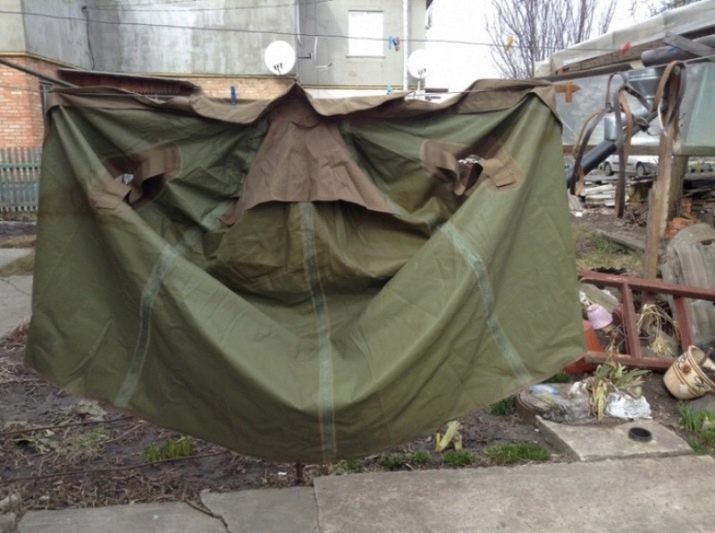
- Carrying. If during the campaign someone from the detachment was injured or ill, and there is no stretcher nearby, then you can use a cape. Its fabric is strong enough and can withstand the average weight of a person.
In addition, in such raincoats, waste can be transported in a small amount.

- Blanket or bedding for insulation. When the temperature is low outside, you can not only put on a raincoat-tent as a warming cape, but also make a good blanket from it for an overnight stay. If the canvas is folded in two layers, it will provide a high level of thermal insulation.

- Awning. To create a reliable shelter, it is not necessary to set up a raincoat in the form of an ordinary tent. From it you can assemble a small awning. To do this, it is enough to pull the cloak between two trees and fix it with eyelets.



- Cape or cloak. As a rule, a raincoat is bought to be used as a comfortable cape.In this case, in this case, it is allowed to use two options: pull out both laces, creating a hood, or simply put on and tie one lace around the neck. In such a dress, neither rain nor wind will be terrible.
You can wear a cape both in summer and in winter.


As for army raincoats, they are characterized by high water resistance, as they are made of rubberized fabric with good waterproofing. Their purpose is unlimited:
- comfortable hammock;
- bedding for cleaning weapons in the field and firing from a machine gun;
- tablecloth for eating in the field;
- a device for transporting food, bread, garbage and dry leaves;
- stretcher for carrying wounded and sick soldiers;
- warm bedding in standard camping tents - bunk beds are covered with it;
- opaque material for closing windows and doors in shelled buildings and destroyed barracks.

In addition, a raincoat can also be used in cases where a dense and durable fabric is required. Most soldiers use raincoats to cover the entrances to dugouts, trenches or huts. A raincoat is also ideal as a bedding for car repairs or creating a heat shield around a campfire.
For information on how to use a raincoat tent, see the following video.




























